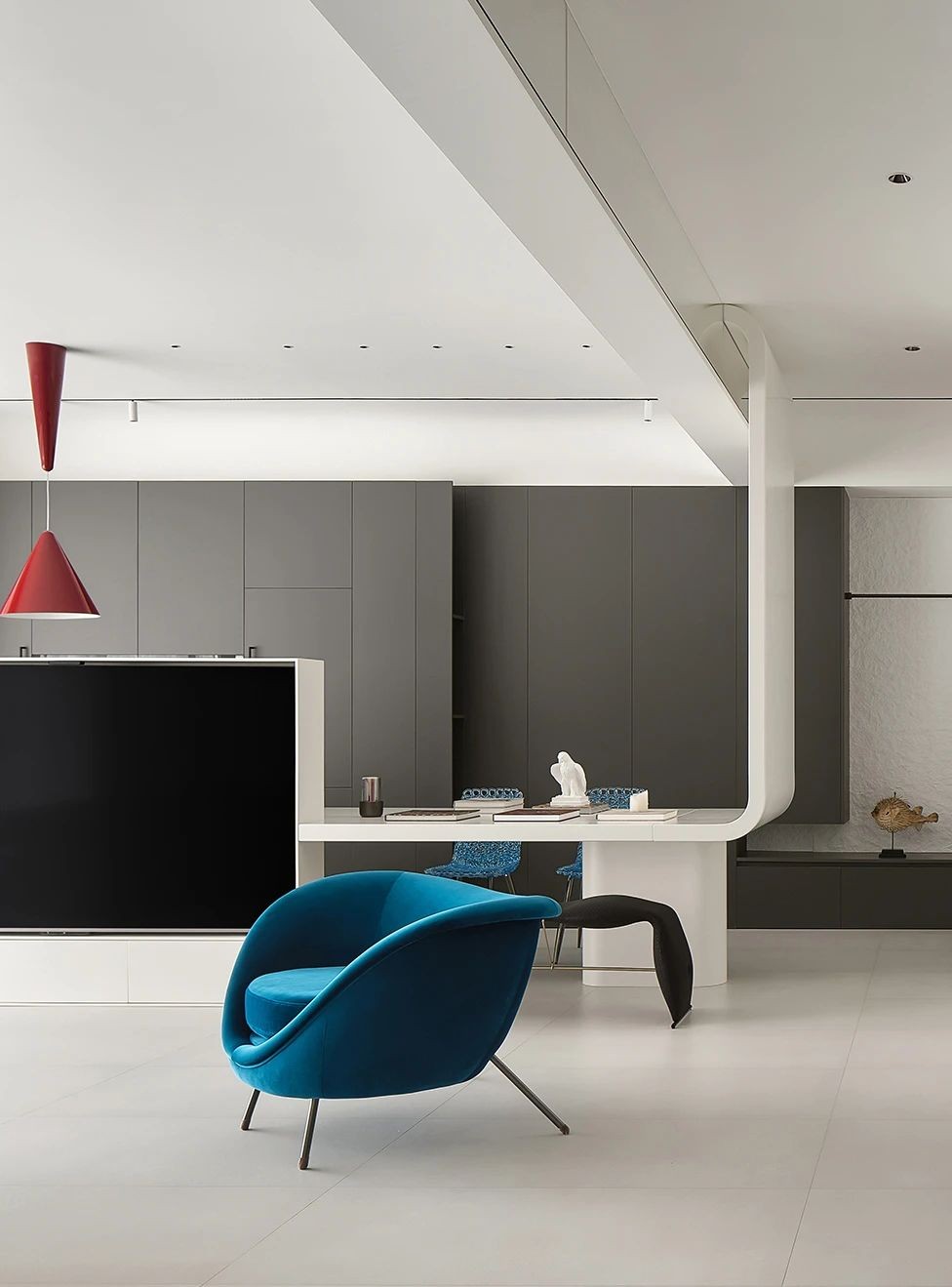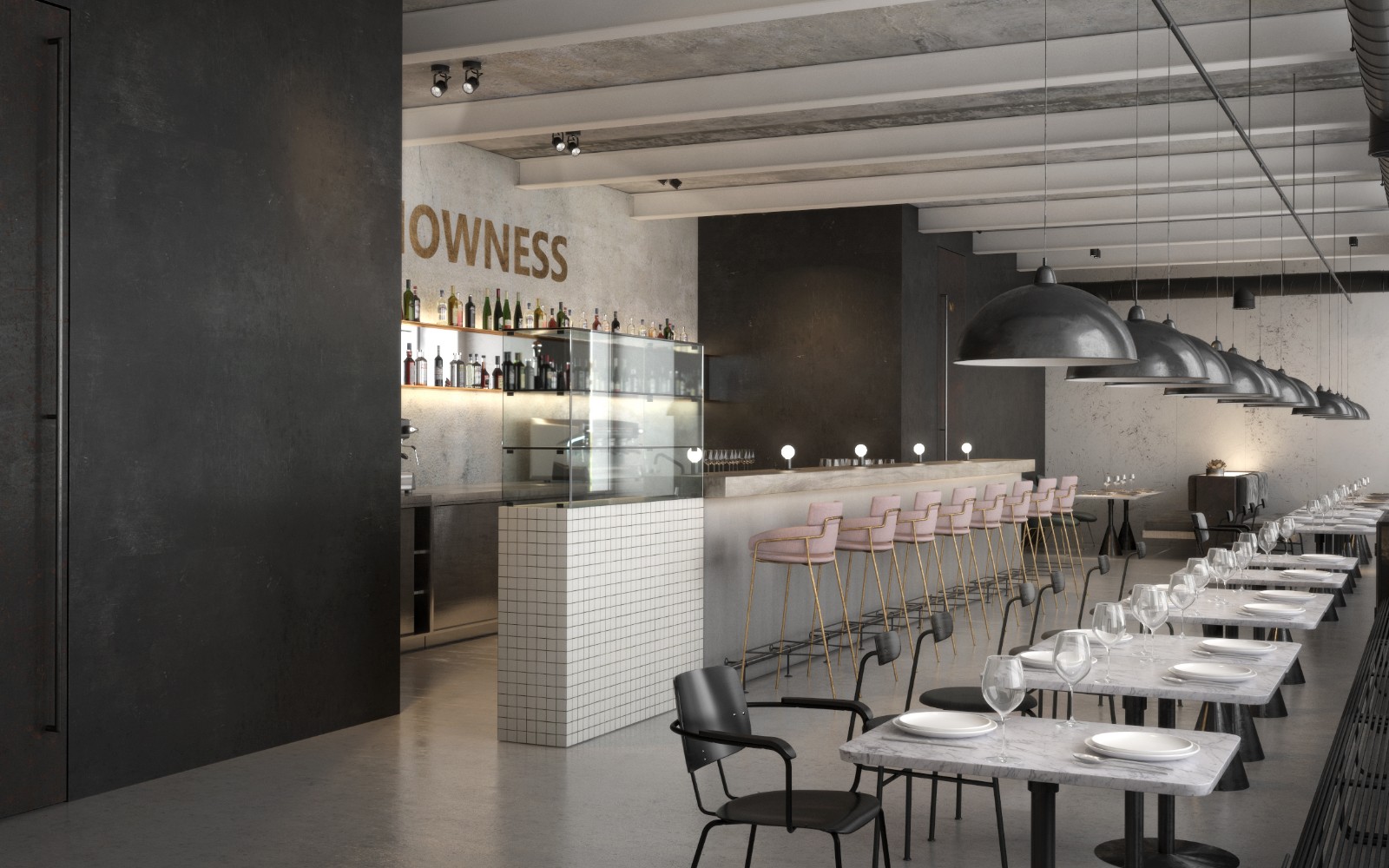EV House HMP Architects
2018-12-16 21:00
© Mario Wibowo
马里奥·维博沃


架构师提供的文本描述。该项目位于印度尼西亚首都雅加达的中心地带,周围环境拥挤,建筑空间有限。土地本身是相当独特的,它是长和位于一个钩的道路交界处。我们分析和研究了空间的形状,并从我们的客户那里积累了所有需要的数据。随着客户需求和需求的不断增加,如何将他们的需求与有限的可用空间结合起来,进行功能设计已经成为一项挑战。
Text description provided by the architects. Located in the heart of Indonesia’s capital city, Jakarta, this project is surrounded with an inherently congested environment and a limited space to build on. The land itself is rather unique, which is long and situated on a hook of the road junction. We analysed and studied the shape of the space and accumulated all the data needed from our client. With the many demands and necessities from the client, it has become a challenge to integrate their needs with the limited available space and create a functional design.
Text description provided by the architects. Located in the heart of Indonesia’s capital city, Jakarta, this project is surrounded with an inherently congested environment and a limited space to build on. The land itself is rather unique, which is long and situated on a hook of the road junction. We analysed and studied the shape of the space and accumulated all the data needed from our client. With the many demands and necessities from the client, it has become a challenge to integrate their needs with the limited available space and create a functional design.
© Mario Wibowo
马里奥·维博沃


根据我们所研究的数据,我们最终得出了建立一个高架结构设计的结论。狭长的地块会引起垂直的环流,并与土地的形状相一致。然而,狭小空间上的高耸结构可能会导致巨大且过大的前立面,因此为了克服这一问题,以斜角度切割了立面顶部的一个尖端,以获得更好的人类尺度观察视角。
Based on the data that we have studied, we finally came to a conclusion to create a design with an elevated structure. The narrow and long site causes a vertical circulation that follows the shape of the land. However, a tall structure on a tight space may result in an immense and overscale front façade, therefore to overcome this problem, a tip of the top section of the façade was cut at an oblique angle to obtain a better observable viewpoint for human scale.
Based on the data that we have studied, we finally came to a conclusion to create a design with an elevated structure. The narrow and long site causes a vertical circulation that follows the shape of the land. However, a tall structure on a tight space may result in an immense and overscale front façade, therefore to overcome this problem, a tip of the top section of the façade was cut at an oblique angle to obtain a better observable viewpoint for human scale.
© Mario Wibowo
马里奥·维博沃


由于建筑物的正面面向东方,我们随机设计了窗户,以使进入房屋的自然日光量降至最低,并减少过剩的热量。对于立面的材料,我们决定使用沥青材料/沥青,它可以减少阳光的热量,进入房屋高达70%。使用沥青的另一个好处是,它需要较少的照顾,从而帮助我们的客户为一个不大惊小怪和易于维护的外部建筑。
As the front façade of the building is facing the east, we designed the window opening in a random order to allow and keep the amount of natural daylight entering the house to a minimum level and reduce excess heat. For the material of the façade, we decided to use an asphalt material/ bitumen which can reduce the heat from the sunlight, entering the house up to 70%. Another benefit of using bitumen is that it requires less care, thus helping our client for a fuss-free and an easy maintenance to the exterior building.
As the front façade of the building is facing the east, we designed the window opening in a random order to allow and keep the amount of natural daylight entering the house to a minimum level and reduce excess heat. For the material of the façade, we decided to use an asphalt material/ bitumen which can reduce the heat from the sunlight, entering the house up to 70%. Another benefit of using bitumen is that it requires less care, thus helping our client for a fuss-free and an easy maintenance to the exterior building.
© Mario Wibowo
马里奥·维博沃


楼梯起到垂直循环的作用,用来让新鲜的空气流入房间,并最大限度地利用楼梯上方天窗的日光进入房间。楼梯是一个与室外直接相连的非交流区域.
The staircase which acts as a vertical circulation, is utilized to let the fresh air flowing into the house and maximising the daylight from the skylight above the stairs into the room. The staircase is a non-AC area that directly connects to the outdoor.
The staircase which acts as a vertical circulation, is utilized to let the fresh air flowing into the house and maximising the daylight from the skylight above the stairs into the room. The staircase is a non-AC area that directly connects to the outdoor.
© Mario Wibowo
马里奥·维博沃


在楼梯和底层起居室之间,有一个巨大的滑动门,可以根据用户的需要打开或关闭。当空调打开,这些滑动板可以关闭以保持室温凉爽,当它是日常的基础上,面板可以打开,以产生交叉通风通过天窗在楼梯。
Between the staircase and the living room at the ground floor, there is a huge sliding door that can be opened or closed, depending on the needs of the user. When the AC is turned on, these sliding panels can be closed to keep the room temperature cool and when it is day-to-day basis, the panels can be opened to generate the cross ventilation through the skylight at the staircase.
Between the staircase and the living room at the ground floor, there is a huge sliding door that can be opened or closed, depending on the needs of the user. When the AC is turned on, these sliding panels can be closed to keep the room temperature cool and when it is day-to-day basis, the panels can be opened to generate the cross ventilation through the skylight at the staircase.
Section 03
Section 03


室内的浅色家具和白橡木的使用被刻意强调,使房子感觉不那么拥挤。深色地砖也是首选,以创造一个舒适和宽敞的氛围。
The light-coloured furniture and the use of white oak throughout the interior are deliberately emphasized so that the house feels less crowded. The dark-coloured floor tile is also preferred to create an ambience that is comfortable and spacious.
The light-coloured furniture and the use of white oak throughout the interior are deliberately emphasized so that the house feels less crowded. The dark-coloured floor tile is also preferred to create an ambience that is comfortable and spacious.
© Mario Wibowo
马里奥·维博沃


















































































Architects HMP Architects
Location Jakarta, Indonesia
Lead Architects HMP Architects (Heru Mudito Prasetyo)
Architect in Charge Wenda Andriyani
Area 315.0 m2
Project Year 2018
Photographs Mario Wibowo
Category Houses
Manufacturers Loading...































